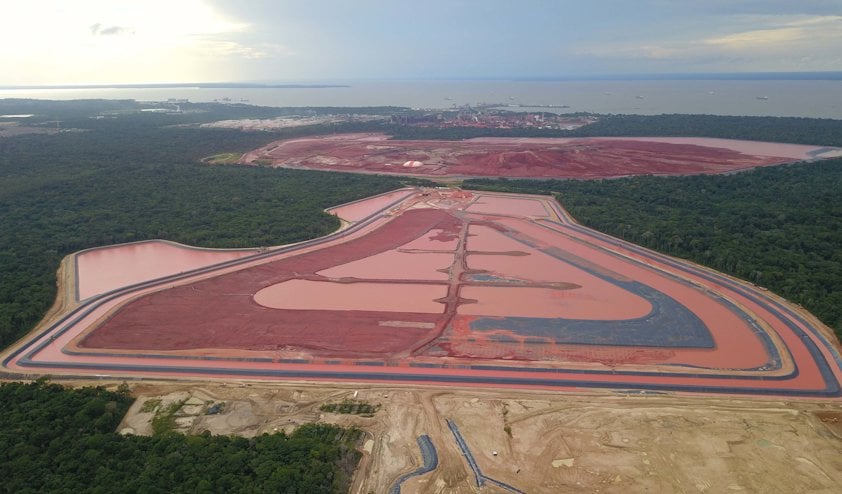Hydro has invested heavily in improved tailings management and state-of-the-art technology for the treatment and disposal of tailings generated from the production of bauxite and alumina in Brazil.
The facilities in Paragominas are dedicated to store tailings from bauxite mining. The tailings undergo a drying cycle that can take 30 to 60 days, during the dry and rainy seasons. After the drying process, the material has a minimum of 60 percent solid content, and is then excavated and deposited back into the mined areas. This method is what Hydro refers to as “Tailings Dry Backfill.”
In Barcarena, the bauxite residue is filter-pressed and stored in dedicated tailings facilities at Hydro’s alumina refinery in Alunorte using an enhanced dry stacking concept. The use of modern press filters results in a bauxite residue with a very low moisture content of 22 percent, which can be more efficiently stored. This new approach means that the residue now occupies only one fourth of the surface area compared to our historical bauxite residue deposit.

How does Hydro manage its tailings facilities?
Hydro’s tailings facilities are operated in line with relevant regulations, regulatory compliance requirements, internal company standards, and the International Council on Mining and Metal (ICMM) framework. At all our tailings facilities, we follow best practice, and audits are conducted by independent third parties. Hydro is committed to implementing the Global Industry Standard on Tailings Management (GISTM), which strives to achieve the goal of zero harm to people and the environment.
You can find more information on how Hydro reinforces the company’s commitment to zero harm, tailings performance and management of the tailings facilities in our annual report and Tailings Management Policy.
What is GISTM?
The Global Industry Standard on Tailings Management (GISTM) is a robust framework developed to enhance the safety, sustainability, and overall management of tailings facilities in the mining industry. GISTM strives to achieve the ultimate goal of zero harm to people and the environment. This is reinforced by an integrated approach to tailings management. The standard aims to prevent catastrophic failure and enhance the safety of mine tailings facilities across the globe. It embodies a step change in terms of transparency, accountability and in safeguarding the rights of people affected by the project.
On August 5, 2020, all ICMM members committed to implementing GISTM at tailings facilities that have a “very high” or “extreme” consequence classification by August 5, 2023. All other tailings facilities operated by members that are not in a state of safe closure will be in conformance with the standard by August 5, 2025.
Aktualisiert: 4. August 2023







